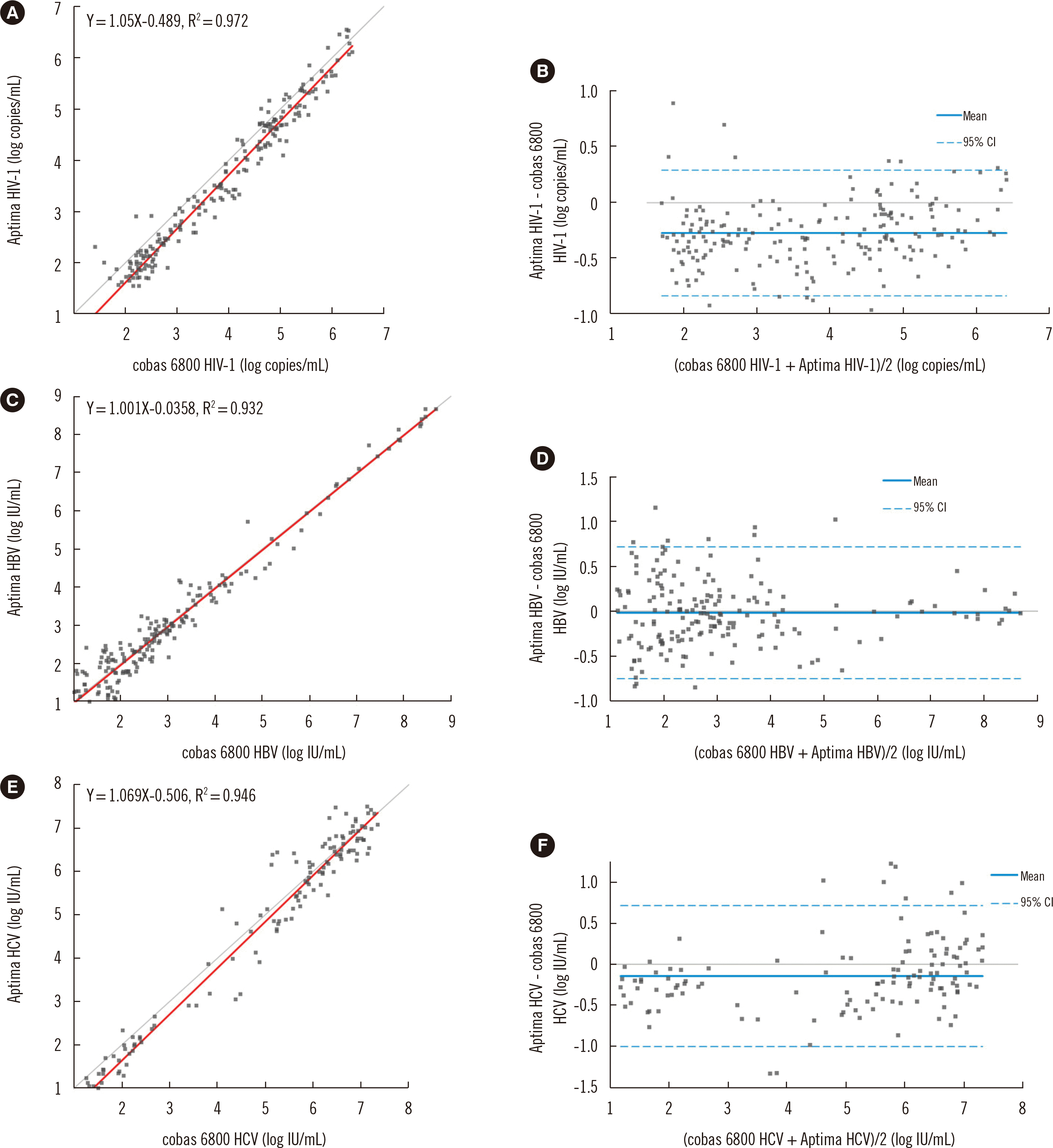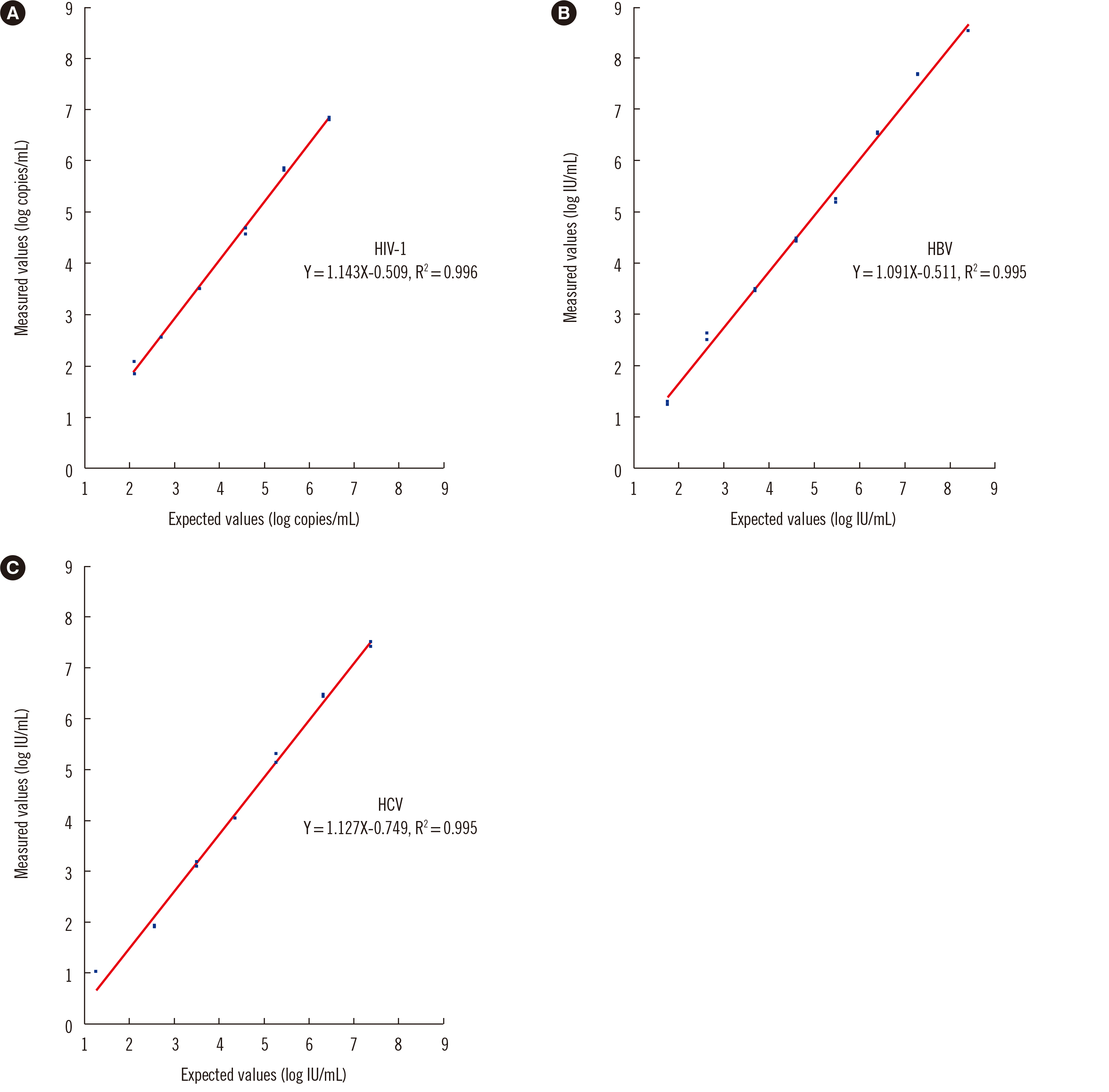1. World Health Organization. 2016. Consolidated guidelines on the use of antiretroviral drugs for treating and preventing HIV infection: recommendations for a public health approach, 2nd ed [Internet]. World Health Organization;Geneva: Available from:
https://www.who.int/publications/i/item/9789241549684. cited 2021 Dec 12.
2. AASLD/IDSA HCV Guidance Panel. 2015; Hepatitis C guidance: AASLD-IDSA recommendations for testing, managing, and treating adults infected with hepatitis C virus. Hepatology. 62:932–54. DOI:
10.1002/hep.27950. PMID:
26111063.
3. European Association for the Study of the Liver. Electronic address: easloffice@easloffice.eu, European Association for the Study of the Liver. EASL 2017 Clinical Practice Guidelines on the management of hepatitis B virus infection. J Hepatol. 2017; 67:370–98.
4. European Association for the Study of the Liver. Electronic address: easloffice@easloffice.eu; European Association for the Study of the Liver. EASL Recommendations on Treatment of Hepatitis C 2018. J Hepatol. 2018; 69:461–511.
5. European Association for the Study of the Liver. 2020; Electronic address: easloffice@easloffice.eu; Clinical Practice Guidelines Panel: Chair:, EASL Governing Board representative:, Panel members. EASL recommendations on treatment of hepatitis C: final update of the series☆. J Hepatol. 73:1170–218. DOI:
10.1016/j.jhep.2020.08.018. PMID:
32956768.
6. Ryom L, Boesecke C, Bracchi M, Ambrosioni J, Pozniak A, Arribas J, et al. 2018; Highlights of the 2017 European AIDS Clinical Society (EACS) Guidelines for the treatment of adult HIV-positive persons version 9.0. HIV Med. 19:309–15. DOI:
10.1111/hiv.12600. PMID:
29493093. PMCID:
PMC5947127.

7. Terrault NA, Bzowej NH, Chang KM, Hwang JP, Jonas MM, Murad MH. 2016; AASLD guidelines for treatment of chronic hepatitis B. Hepatology. 63:261–83. DOI:
10.1002/hep.28156. PMID:
26566064. PMCID:
PMC5987259.

8. Terrault NA, Lok ASF, McMahon BJ, Chang KM, Hwang JP, Jonas MM, et al. 2018; Update on prevention, diagnosis, and treatment of chronic hepatitis B: AASLD 2018 hepatitis B guidance. Hepatology. 67:1560–99. DOI:
10.1002/hep.29800. PMID:
29405329. PMCID:
PMC5975958.

9. Aretzweiler G, Leuchter S, García-Álvarez M, Simon C, Marins E, Paxinos E, et al. 2019; Analytical performance of four molecular platforms used for HIV-1, HBV and HCV viral load determinations. Expert Rev Mol Diagn. 19:941–9. DOI:
10.1080/14737159.2019.1624162. PMID:
31159598.

10. Günthard HF, Aberg JA, Eron JJ, Hoy JF, Telenti A, Benson CA, et al. 2014; Antiretroviral treatment of adult HIV infection: 2014 recommendations of the International Antiviral Society-USA Panel. Jama. 312:410–25. DOI:
10.1001/jama.2014.8722. PMID:
25038359.
11. Wiesmann F, Ehret R, Naeth G, Däumer M, Fuhrmann J, Kaiser R, et al. 2018; Multicenter evaluation of two next-generation HIV-1 quantitation assays, Aptima Quant Dx and cobas 6800, in comparison to the RealTime HIV-1 reference assay. J Clin Microbiol. 56:DOI:
10.1128/JCM.00292-18. PMID:
30068537. PMCID:
PMC6156314.

12. Wiesmann F, Naeth G, Sarrazin C, Berger A, Kaiser R, Ehret R, et al. 2015; Variation analysis of six HCV viral load assays using low viremic HCV samples in the range of the clinical decision points for HCV protease inhibitors. Med Microbiol Immunol. 204:515–25. DOI:
10.1007/s00430-014-0364-z. PMID:
25398515. PMCID:
PMC4514908.

13. Hayden RT, Sun Y, Tang L, Procop GW, Hillyard DR, Pinsky BA, et al. 2017; Progress in quantitative viral load testing: variability and impact of the WHO quantitative international standards. J Clin Microbiol. 55:423–30. DOI:
10.1128/JCM.02044-16. PMID:
27852673. PMCID:
PMC5277511.

14. Schalasta G, Speicher A, Börner A, Enders M. 2016; Performance of the new Aptima HCV Quant Dx assay in comparison to the Cobas TaqMan HCV2 test for use with the high pure system in detection and quantification of hepatitis C virus RNA in plasma or serum. J Clin Microbiol. 54:1101–7. DOI:
10.1128/JCM.03236-15. PMID:
26865682. PMCID:
PMC4809922.

15. Manak MM, Hack HR, Nair SV, Worlock A, Malia JA, Peel SA, et al. 2016; Evaluation of Hologic Aptima HIV-1 Quant Dx assay on the Panther system on HIV subtypes. J Clin Microbiol. 54:2575–81. DOI:
10.1128/JCM.01350-16. PMID:
27510829. PMCID:
PMC5035401.

16. Nair SV, Kim HC, Fortunko J, Foote T, Peling T, Tran C, et al. 2016; Aptima HIV-1 Quant Dx-A fully automated assay for both diagnosis and quantification of HIV-1. J Clin Virol. 77:46–54. DOI:
10.1016/j.jcv.2016.02.002. PMID:
26896710.

17. Sauné K, Raymond S, Boineau J, Pasquier C, Izopet J. 2016; Detection and quantification of HIV-1 RNA with a fully automated transcription-mediated-amplification assay. J Clin Virol. 84:70–3. DOI:
10.1016/j.jcv.2016.09.002. PMID:
27728849.

18. Schalasta G, Börner A, Speicher A, Enders M. 2016; Comparative evaluation of the Aptima HIV-1 Quant Dx assay and COBAS TaqMan HIV-1 v2.0 assay using the Roche High Pure System for the quantification of HIV-1 RNA in plasma. Clin Chem Lab Med. 54:493–9. DOI:
10.1515/cclm-2015-0522. PMID:
26351942.

19. Tabrizi SN, Costa AM, Su J, Lowe P, Bradshaw CS, Fairley CK, et al. 2016; Evaluation of the Hologic Panther transcription-mediated amplification assay for detection of
Mycoplasma genitalium. J Clin Microbiol. 54:2201–3. DOI:
10.1128/JCM.01038-16. PMID:
27307453. PMCID:
PMC4963517.

20. Chevaliez S, Dauvillier C, Dubernet F, Poveda JD, Laperche S, Hézode C, et al. 2017; The new Aptima HBV Quant Real-Time TMA assay accurately quantifies hepatitis B virus DNA from genotypes A to F. J Clin Microbiol. 55:1211–9. DOI:
10.1128/JCM.02219-16. PMID:
28202793. PMCID:
PMC5377849.

21. Chevaliez S, Dubernet F, Dauvillier C, Hézode C, Pawlotsky JM. 2017; The new Aptima HCV Quant Dx Real-time TMA assay accurately quantifies hepatitis C virus genotype 1-6 RNA. J Clin Virol. 91:5–11. DOI:
10.1016/j.jcv.2017.03.020. PMID:
28380393.

22. Schønning K, Johansen K, Landt B, Benfield T, Westh H. 2017; Comparison of the Hologic Aptima HIV-1 Quant Dx assay to the Roche COBAS Ampliprep/COBAS TaqMan HIV-1 test v2.0 for the quantification of HIV-1 RNA in plasma samples. J Clin Virol. 92:14–9. DOI:
10.1016/j.jcv.2017.05.006. PMID:
28505569.

23. Schønning K, Pedersen MS, Johansen K, Landt B, Nielsen LG, Weis N, et al. 2017; Analytical and clinical performance of the Hologic Aptima HCV Quant Dx assay for the quantification of HCV RNA in plasma samples. J Virol Methods. 248:159–65. DOI:
10.1016/j.jviromet.2017.07.006. PMID:
28732692.

24. Worlock A, Blair D, Hunsicker M, Le-Nguyen T, Motta C, Nguyen C, et al. 2017; Analytical characteristics and comparative evaluation of Aptima HCV Quant Dx assay with the Abbott RealTime HCV assay and Roche COBAS AmpliPrep/COBAS TaqMan HCV quantitative test v2.0. Virol J. 14:66. DOI:
10.1186/s12985-017-0727-3. PMID:
28372576. PMCID:
PMC5379753.

25. Longo S, Bon I, Musumeci G, Bertoldi A, D'Urbano V, Calza L, et al. 2018; Comparison of the Aptima HIV-1 Quant Dx assay with the COBAS AmpliPrep/COBAS TaqMan HIV-1 v2.0 test for HIV-1 viral load quantification in plasma samples from HIV-1-infected patients. Health Sci Rep. 1:e31. DOI:
10.1002/hsr2.31. PMID:
30623066. PMCID:
PMC6266574.

26. May S, Adamska E, Tang JW. 2018; Evaluating the aptima HIV-1 quant Dx, HCV quant Dx and HBV quant assays against the Abbott HIV-1, HCV and HBV RealTime assays. J Clin Virol. 106:7–10. DOI:
10.1016/j.jcv.2018.06.015. PMID:
30007139.

27. Schalasta G, Börner A, Speicher A, Enders M. 2018; Evaluation of the Aptima HBV Quant assay vs. the COBAS TaqMan HBV test using the high pure system for the quantitation of HBV DNA in plasma and serum samples. Clin Chem Lab Med. 56:634–41. DOI:
10.1515/cclm-2017-0701. PMID:
29197859.

28. Schønning K, Johansen K, Nielsen LG, Weis N, Westh H. 2018; Analytical performance of the Hologic Aptima HBV Quant assay and the COBAS Ampliprep/COBAS TaqMan HBV test v2.0 for the quantification of HBV DNA in plasma samples. J Clin Virol. 104:83–8. DOI:
10.1016/j.jcv.2018.05.007. PMID:
29783147.

29. Mwau M, Mbugua J, Danda J, Handa A, Worlock A, Kim HC, et al. 2020; Performance evaluation of the Aptima HIV-1 Quant Dx assay for detection of HIV in infants in Kenya. J Clin Virol. 125:104289. DOI:
10.1016/j.jcv.2020.104289. PMID:
32097889.

30. Rossetti R, Smith T, Luo W, Taussig J, Valentine-Graves M, Sullivan P, et al. 2020; Performance evaluation of the Aptima HIV-1 RNA Quant assay on the Panther system using the standard and dilution protocols. J Clin Virol. 129:104479. DOI:
10.1016/j.jcv.2020.104479. PMID:
32531665. PMCID:
PMC7395893.

31. Aretzweiler G, Leuchter S, Simon CO, Marins E, Frontzek A. 2019; Generating timely molecular diagnostic test results: workflow comparison of the cobas® 6800/8800 to Panther. Expert Rev Mol Diagn. 19:951–7. DOI:
10.1080/14737159.2019.1665999. PMID:
31526152.

32. Maasoumy Bz, Geretti AM, Frontzek A, Austin H, Aretzweiler G, Garcia-Álvarez M, et al. 2020; HBV-RNA co-amplification may influence HBV DNA viral load determination. Hepatol Commun. 4:983–97. DOI:
10.1002/hep4.1520. PMID:
32626831. PMCID:
PMC7327219.

33. CLSI. 2014. Evaluation of precision of quantitative measurement procedure; approved guideline. Clinical Laboratory Standards Institute;Wayne, PA: 3rd ed. EP05A3.
34. CLSI. 2003. Evaluation of the linearity of quantitative measurement procedures: a statistical approach; approved guideline. EP06-A. Clinical and Laboratory Standards Institute;Wayne, PA:





 PDF
PDF Citation
Citation Print
Print




 XML Download
XML Download